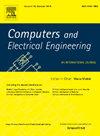Optimal day-ahead scheduling and reconfiguration of active distribution systems considering energy hubs, residential demand response aggregators, and electric vehicle parking lot aggregators
IF 4
3区 计算机科学
Q1 COMPUTER SCIENCE, HARDWARE & ARCHITECTURE
引用次数: 0
Abstract
This paper presents the optimal day-ahead scheduling and reconfiguration of an active distribution system considering energy hubs, residential demand response aggregators, and electric vehicle parking lot aggregators. The main contribution of this paper is that it introduces a three-level framework for scheduling and reconfiguring active distribution systems and modeling the competition among residential demand response aggregators in the day-ahead horizon.This framework examines the flexible integrated demand response program for smart residential consumers and multi-carrier energy hubs. The study evaluates the impacts of power exchange by consumers on the profits and costs of stakeholders while minimizing operational costs, maximizing power exchange profits, and ensuring residential comfort levels. Additionally, optimal scheduling and reconfiguration of the active distribution system have been proposed. In the first level, the optimization process focuses on the residential demand response aggregators and electric vehicle parking lots, incorporating Cournot-based competition among residential aggregators and prioritizing carbon emissions reduction and fuel savings. In the second level, self-scheduling of multi-carrier energy hubs is performed to determine profits and costs. In the third level, the proposed procedure considers the contribution of lower-level agents that can be utilized for scheduling and reconfiguring the active distribution system. The effectiveness of the model was assessed using a modified IEEE 123 bus system. The simultaneous implementation of the proposed demand response program and optimal reconfiguration reduced operational costs by 5.28%. Furthermore, competition among residential demand response aggregators and the implementation of the proposed demand response program increased profits by $75.49 and $61.03, respectively.

求助全文
约1分钟内获得全文
求助全文
来源期刊

Computers & Electrical Engineering
工程技术-工程:电子与电气
CiteScore
9.20
自引率
7.00%
发文量
661
审稿时长
47 days
期刊介绍:
The impact of computers has nowhere been more revolutionary than in electrical engineering. The design, analysis, and operation of electrical and electronic systems are now dominated by computers, a transformation that has been motivated by the natural ease of interface between computers and electrical systems, and the promise of spectacular improvements in speed and efficiency.
Published since 1973, Computers & Electrical Engineering provides rapid publication of topical research into the integration of computer technology and computational techniques with electrical and electronic systems. The journal publishes papers featuring novel implementations of computers and computational techniques in areas like signal and image processing, high-performance computing, parallel processing, and communications. Special attention will be paid to papers describing innovative architectures, algorithms, and software tools.
 求助内容:
求助内容: 应助结果提醒方式:
应助结果提醒方式:


